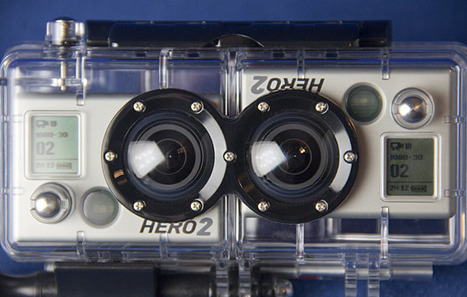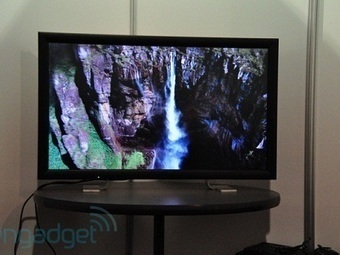 Your new post is loading...
 Your new post is loading...
Netflix Open Connect, the single purpose video content delivery network launched last year, is now delivering the majority of Netflix international traffic and is growing at a rapid pace in the domestic market.
Netflix Open Connect is now widely deployed around the world, serving the vast majority of Netflix video in Europe, Canada and Latin America, and a growing proportion in the US, where Netflix has over 25 million streaming members.
Now available through Open Connect partners, Netflix Super HD is the highest quality video format offered by Netflix, providing an even better picture on 1080p HDTVs. In the US, Netflix is also for the first time offering a small number of titles streaming in 3D through Open Connect partners.
As the BBC and NHK wow audiences with Super Hi-Vision screenings of the London Olympics, we ask why the ‘future of television’ format is able to provide a pseudo 3D illusion, despite being presented on a 2D screen. It is not difficult to understand why the 7680 x 4320 pixels of picture resolution, immersive 22.2 channel 3D sound and 60 FPS refresh rate impresses viewers more than 3D with its bright super crisp images. But why people acknowledge a 3D effect remains a mystery, even to NHK.
NHK believe Super Hi-Vision will be the final 2D definition and expect the format (also known as Ultra-HD) to be broadcast sooner than the original 2020 target date due to the rapid progress of the technology. Beyond SHV, NHK are looking towards a 3D format known as 'Integral 3D' which requires no 3D glasses and allows the viewers to look around objects.
The Consumer Electronics Association has announced five new standards today, ranging in topic from accessibility to 3D video to wireless charging, which are now available to guide designers as they develop innovative products for consumers. CEA also released a technical report that addresses television picture brightness. The new standards are as follows: – ANSI/CEA-2041, Standard for a Round Tactile Indicator – CEA-708.1, Digital Television (DTV) Closed Captioning: 3D Extensions – CEA-2038, Command-Driven Analog IR-Synchronized Active Eyewear – CEA-2042.1-A, Wireless Power Glossary of Terms – CEA-805-D-1, Data Services on the Component Video Interfaces – The technical report, CEA-TR-1, Home Illumination Study, details results of a comprehensive study of ambient light
On June 27th Philadelphia based Stream TV Networks will reveal improvements to its glasses free 3D SeeCube Conversion engine and more details about their Ultra-D standard. Stream TV Networks previously demo’ed its Ultra-D technology on a 42” 3D display at CES in January. It is a proprietary auto-stereo 3D standard that can be used for PCs, picture frames, tablets, TVs and set top boxes with browsers. Part of that is the SeeCube conversion engine that can convert 2D and 3D video into a multi-view format required for multi-person 3D viewing without glasses. At the conference in New York on Wednesday, Journalists can expect to see improved quality and efficiency of the auto-converter box system that can convert a live feed (from a 3D cable channel for example) in real time on a Stream TV Network display.
Modern Times Group’s (MTG) Viasat Broadcasting in Norway and the Norwegian Broadcasting Corporation (NRK) have entered into an agreement regarding the sublicensing of the rights to broadcast live 3D coverage of the London 2012 Olympics. Viasat will broadcast more than 100 hours of live coverage from the Olympics on its Viasat 3D channel, which will be the only Norwegian pay-TV channel showing 3D coverage. NRK will broadcast coverage of the Olympics in high definition (HD) on its NRK1 and NRK2 channels, which are also available on the Viasat satellite platform in Norway. 3D technology is becoming a standard feature for the majority of new TV sets bought in Norway. According to Norway’s Consumer Electronics Trade Foundation, 175,000 3D television sets were sold in 2010 and 2011 combined, while 250,000 3D sets are expected to be sold in 2012 alone.
Quality of image and the need to wear glasses have, along with cost, been the biggest gating factors leading to poor 3D take-up to date, but Dolby Laboratories and Royal Philips Electronics believe they have a solution. The two technology leaders have launched Dolby 3D, a 3D HD format and suite of technologies designed to deliver full HD 3D content to 3D-enabled devices, including glasses-free displays. The joint project has been undertaken to develop a complete system designed to work throughout the chain to deliver clear glasses-free 3D content that operates over existing distribution systems, improving 3D viewing experience on displays of all sizes, including smartphones, tablets, PCs, and televisions.
TV graphics designers have been rendering 3D graphics for 2D TV (HD and SD) for years. Typically, the 3D graphics are created inside a virtual 3D world in their computers. These 3D images are then converted so that they still appear to be three-dimensional when viewed on a 2D TV screen. Pixel Power's 3D stereographic option is seamlessly integrated within Pixel Power Clarity and BrandMaster interfaces. "3D graphics and animation capabilities are a standard feature on Chyron's two-channel HyperX3 on-air graphics systems, and since most of the graphics are already designed in 3D, broadcasters can take them to air even more quickly," says Jim Martinolich, Chyron's vice president of Integration Technology for Chyron in Melville, NY. "Some tricks, such as shading the area around a lower third or logo, help to blend the graphics into the 3D scene." Logically, using 3D graphics on 3DTV should be simpler than working with 2D television, because no conversion is required. A designer should be able to import their 3D renderings directly into the 3D playout server, for overlaying with 3D video as required. In the strictest sense, this assumption is correct. However, actually mixing 3D graphics and live 3D video can be downright tricky, if not sometimes seemingly impossible.
Due to its advanced codec, multiformat file support and unparalleled speed, the Grass Valley EDIUS high-definition (HD), nonlinear video editing software is quickly becoming one of the dominant solutions among editors working in the digital news and professional video production industries. At NAB 2012 Grass Valley will demonstrate the latest version (EDIUS v.6.5), with a comprehensive 3D editing workflow and native support for raw footage captured with digital cinematography cameras from RED Digital.
The new EDIUS software boasts a comprehensive 3D workflow, complete with 3D stereoscopic editing tools and new 3D support across its editing peripherals. The full family of 3D-compatible Grass Valley editing peripherals-such as the STORM 3G 3D and STORM 3G Elite 3D accelerator cards (with stereoscopic 3D I/O through a single 3G SDI source and/or dual 3G SDI signals)-are now all supported from the EDIUS timeline. EDIUS software and hardware supports all of the most common stereoscopic modes-including the Side-by-Side, Top & Bottom and Line-by-Line display methods.
New BBC White Paper details research into holographic displays, laser based glasses free 3D screens for multiple viewers and 3D video for mobile.
The BBC R&D team have been working closely with R&D teams across the world on all aspects of 3D TV from capture, postproduction, and coding, to transmission and end-user terminals. In the BBC’s 3D-TV R&D Activities in Europe white paper released last night by Oliver Grau, Thierry Borel, Peter Kauff, Aljoscha Smolic and Ralf Tanger, details of previous and on-going research into 3D for the home and mobile devices are summarised providing a fascinating insight into how 3D entertainment could be consumed in the future.
So, is S3D the next big thing in home entertainment?
Here’s what appeared in The New York Times: “…this week, a special study group of experts on stereoscopic television is meeting in Washington to try to decide which system should be adopted. Should the group reach agreement, the system it endorses would be proposed to the International Telecommunications Union, which is considering adopting a global standard for 3-D television.”
Yes, that appeared in The New York Times, in an article headlined “3-D TV Thrives Outside the U.S.” It appeared on April 22.
It appeared on April 22 of the year 1980, more than 30 years ago. And, roughly 30 years before that, on May 3, 1953, Business Week ran the headline “3-D Invades TV,” describing ongoing S3D broadcasts that began that year.
If S3D television was first broadcast more than 80 years ago (and was discussed even earlier), why should it be considered the next big thing now? There are some good reasons.
3D-TV is a topic that has been studied for many years in Europe. Through the research frameworks of the European Commission in particular, a number of long-term issues have been addressed to overcome limitations of the traditional two-view stereoscopy. This article gives a brief overview of the goals and achievements of some completed European projects starting in the 1990s. It then reviews the topics related to 3D-TV in recent European research. Finally an overview with a selection of recent projects is presented.
Viewers and producers both seek a more realistic viewing experience from cinema and television systems. There are several ways to make the television more immersive. Three paths that are being followed include increasing the field of view, adding depth perception and improving motion rendition. Producers look to maintain the value of their investments into the future. We already see SD channels commissioning HD programming with a eye on the future. New formats like S3D are gaining a niche following among viewers, but Super HiVision — 4K and 8K — is going to set a new benchmark for video quality.
Raystream’s cloud-based architecture enables customers to compress HD 3D videos, up to 1080 pixels, at the same bandwidth requirements as 2D content, and instantly view the compressed video on any 3D video-enabled device, including home theatres, set-top boxes, tablets, game consoles, laptops and mobile phones. Using Raystream’s Full HD 3D compression tool, full-frame left and full-frame right HD 3D videos are condensed into a single, synchronized stream. That single stream can be played by HD 3D devices as full-left and full-right play out or side-by-side.
|
As part of the BBC’s debate into the long term future of broadcasting it pitted SHV against 3D during the Olympics – and guess which won? The BBC’s internal debate about the future of broadcasting live events appears to be settling on a vision of 8K – or sixteen times the resolution of current HD – rather than 3D. The latest high profile figure to comment on the merits of the two immersive visual systems is BBC Director of Sport Barbara Slater who supervised the 3D broadcasts and Super Hi-Vision experiments in London of the Olympic Games.
Keiichi Kubota, NHK’s Exective Director-General for Engineering, tells 3D Focus that the target date for Super Hi-Vision experimental broadcasting could be brought forward to 2016 and progress is being made with 'true 3D'. Kubota also said that the engineers have made progress with Integral 3D – NHK’s future 3D format that does not require 3D glasses and allows people to ‘look around’ objects.
SPB TV Solution empowers 3D and regular 2D video formats encoding and streaming in multiple quality options, from mobile to HD, to provide the brightest user experience on a small phone as well as on a big modern TV. Due to anaglyph and side-by-side technology support, 3D video can be delivered to both 3D-enabled and usual screens. SPB TV pays great attention to the stability and quality of the video playback in any network capabilities, so its solutions support all major technologies of adaptive streaming: RTSP, Apple HTTP Live Streaming (HLS), Microsoft Smooth Streaming, Adobe HTTP Dynamic Streaming, as well as MPEG-DASH - a new unified adaptive bitrate standard developed by ISO.
SAMSUNG is set to launch OLED TVs in Australia in coming months capable of displaying two TV channels at once. The technology, demonstrated in January at the Consumer Electronics Show in Las Vegas, will allow two people sitting side-by-side to watch two different channels at the same time, in what is a variation of the current 3D technology. Research firm DisplaySearch said Samsung and LG were set to do battle at the high-end of the Australian market when the OLED TV's finally reached Australia. Samsung's technology, called "smart dual view" 'is set to overtake conventional 3D as TV's cool new feature. Rival LG already had released a form of dual view on its Australian TVs for gaming which allows two people to see their aspect of the same game full-screen on the same display using modified 3D glasses.
Dolby Laboratories and Royal Philips have unveiled Dolby 3D, a 3D HD format and suite of technologies designed to deliver full HD 3D content to 3D-enabled devices, including glasses-free displays. The two leading companies have undertaken the joint project to improve the 3D viewing experience on displays of all sizes, including smartphones, tablets, PCs, and televisions. Dolby 3D is a complete system designed to work throughout the chain to deliver clear glasses-free 3D content that operates over existing distribution systems.
CeBIT 2012 – The Fraunhofer Heinrich Hertz Institute premieres 3D Internet TV transmission with MVC over MPEG-DASH
For the first time, the Fraunhofer Heinrich Hertz Institute presents 3D web streaming using the MVC standard in the MPEG-DASH format. MVC stands for Multiview Video Coding which in a 3D transmission enables reproduction of a high quality 2D view on a standard terminal. MPEG-DASH means Dynamic Adaptive Streaming over HTTP and is a fledgling open multimedia transmission format for Internet TV for stationary and mobile end devices.
Whether you love it or hate it, 3D Stereography is here for awhile. And if you’re totally into it like I am, you quickly realize that there are few turnkey workflows out there to capture and process 3D Stereo video that’s easy to setup, shoot and edit Stereo pairs. Sure, there are a lot of high-end (expensive to rent) systems for two cameras to shoot, software to sync/mux the footage and rigs you can build to edit it, but GoPro has brought it together with a fun and easy-to-use system that anyone can use.
Shaun the Sheep, An HTML5 Video Experiment
Watch Shaun and his friends' antics in clips from "An Ill Wind", "Snowed In", "The Big Chase", and "Twos Company" through an interactive experiment created with hardware-accelerated HTML5 video, 3D CSS Transforms, and WebM. Use the controls to expand and shrink the video, rotate the scene, bring up a rotating carousel of videos, turn on puddle reflection, and navigate between videos in a snap.
HTML5 and CSS make these advanced functionalities (and more!) a part of the modern web standard, and allow developers and artists to create immersive, imaginative experiences for everyone to enjoy.
Requirements:Windows Vista/Mac OS X 10.6 or above, Google Chrome
Stream TV Networks has announced that it will unveil its new Ultra-D technology at CES 2012. Ultra-D is a next generation 3D without glasses display technology that surpasses all 3D viewing experiences offered to date.
Developed by Stream TV Networks, the producer of the eLocity brand of mobile tablets launched first in 2010, the Ultra-D technology is strictly proprietary and leverages custom hardware, middleware techniques and software algorithms to create unprecedentedautostereoscopic 3D imagery.
... MPEG news from its 98th meeting in Geneva, Switzerland with less than 140 characters and a lot of acronyms. The official press release is, as usual, here. As you can see from the press release, MPEG produced significant results, namely: - MPEG Dynamic Adaptive Streaming over HTTP (DASH) ratified - 3D Video Coding: Evaluation of responses to Call for Proposals - MPEG royalty free video coding: Internet Video Coding (IVC) + Web Video Coding (WebVC) - High Efficiency Coding and Media Delivery in Heterogeneous Environments: MPEG-H comprising MMT, HEVC, 3DAC - Compact Descriptors for Visual Search (CDVS): Evaluation of responses to the Call for Proposals - Call for requirements: Multimedia Preservation Description Information (MPDI) - MPEG Augmented Reality (AR) As you can see, a long list of achievements within a single meeting but let's dig inside. For each topic I've also tried to provide some research issues which I think are worth to investigate both inside and outside MPEG.
The DVB has allied with the 3D@Home Consortium to encourage the development of standards for 3DTV. The move will also ensure that knowledge about 3D viewing is shared and that the bodies’ work is complementary. Commenting on the liaison is David Wood, chair of DVB’s Commercial Module on 3DTV: “3D@Home is an important organisation for 3DTV. They have many areas of interest, including the study of ‘human factors’ associated with 3DTV viewing that we are hoping to learn from. For our part, our work developing delivery specifications for 3DTV, will be helpful for 3D@home.” The 3D@Home Consortium was formed in 2008 with the mission to speed the commercialisation of 3D into homes worldwide and provide the best possible viewing experience by facilitating the development of standards, roadmaps and education for the entire 3D industry - from content, hardware and software providers to consumers.
|



 Your new post is loading...
Your new post is loading...






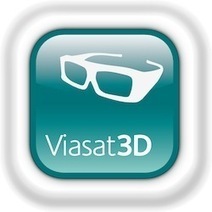
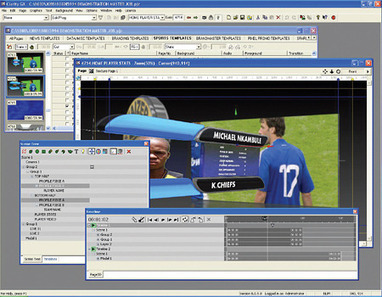
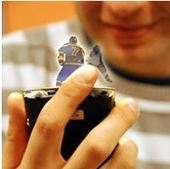
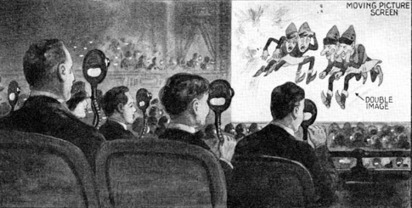
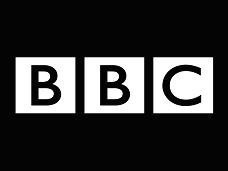


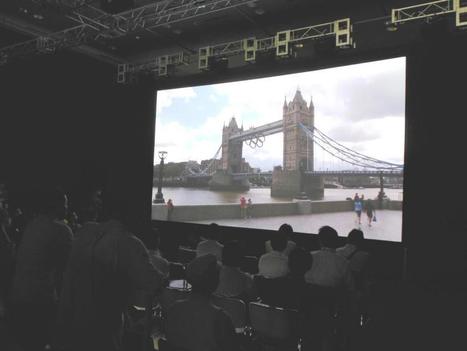

![SPB TV's "3D Video on 3 Screens" solution supports all ABR streaming protocols [PR] | Video Breakthroughs | Scoop.it](https://img.scoop.it/VsMI5yRgmCLYu155um0i1Dl72eJkfbmt4t8yenImKBVvK0kTmF0xjctABnaLJIm9)


